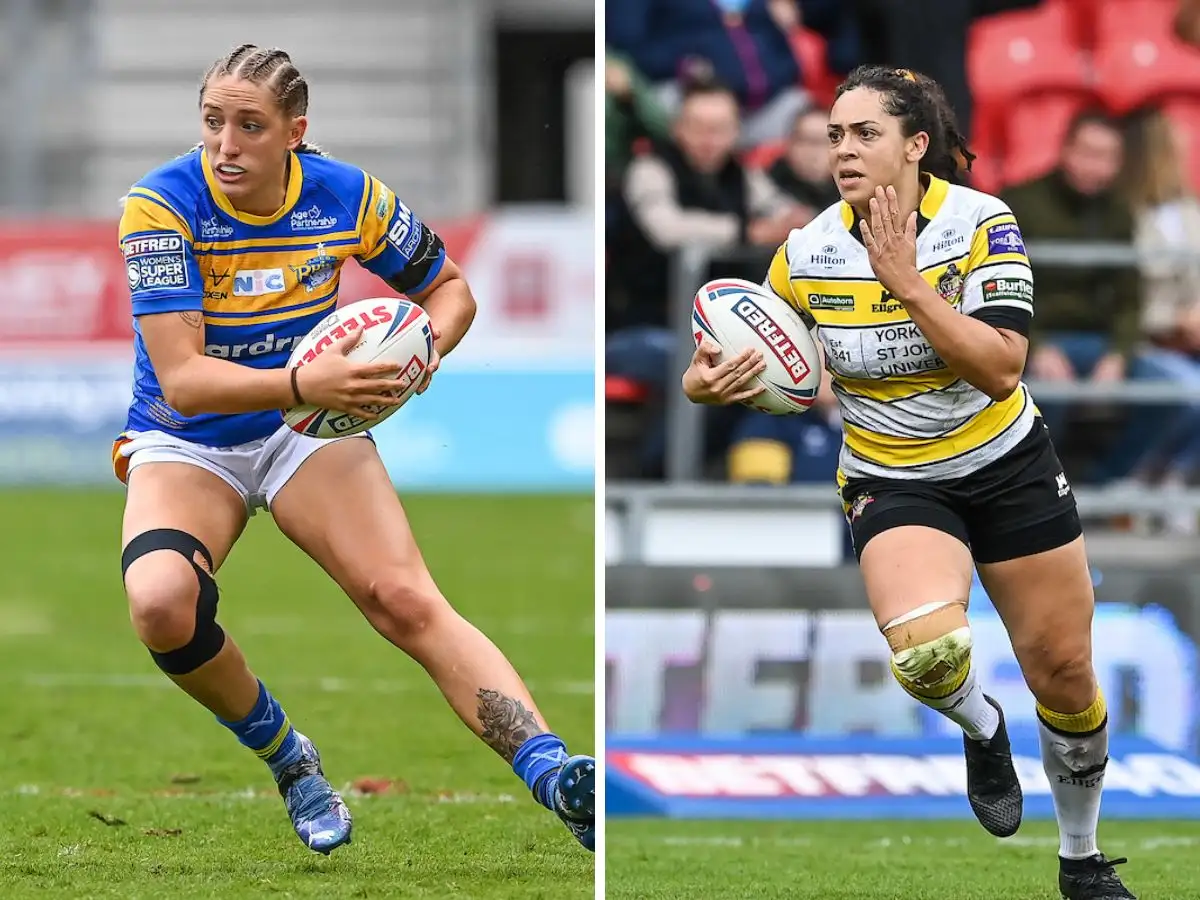Paying players another step in the right direction for women’s rugby league

Photos: News Images
York have joined Leeds in paying their women’s team from the 2023 season, marking another step in the right direction for women’s rugby league.
York chairman Clint Goodchild says his decision to pay the Valkyrie players were solidified after speaking to the Rugby Football League and Leeds chief executive Gary Hetherington.
“It’s great recognition for the girls and this is just the first step,” Goodchild to York Press.
“There’s going to be on-going increases, looking at how quickly the NRLW has taken off.
“The majority of the players in our squad are under the age of 24. Our hope is that every girl in our squad can play out their careers subject to their bodies not subject to their wallets.
“They don’t have to retire due to income, they can reach their potential as players as long as they can sustain their fitness.”
“Leeds Rhinos women’s team are an integral part of our club,” Rhinos chief executive Gary Hetherington said back in October.
“We are keen to see them progress as well as inspiring more woman and girls in Leeds to play rugby league.”
Women’s rugby league goes from strength to strength
It’s hard to believe that the Women’s Super League is less than 10 years old given its meteoric rise.
The WSL enjoyed a successful in 2017, with just four teams competing in its “soft launch” season. Fast forward to 2023, where there will be 12 teams split into two groups.
The women’s game has undoubtedly been given a bigger profile thanks to the introduction of the WSL, adopting the name to run alongside the men’s top flight.
The likes of Bradford Bulls took over the Bradford Thunderbirds team, whilst the successful Thatto Heath Crusaders transitioned into St Helens.
Media interest
The women’s game has never had as much media profile as it does now. We are coming on the back of a successful World Cup on the women’s front, with Canada and Brazil enjoying their first-ever Rugby League World Cup tournaments.
There are more games on TV than every before, and it’s gradually getting more coverage each season. More eyeballs are on women’s rugby league now thanks to the coverage from Sky Sports, BBC, Our League and The Sportsman.
Attendances are on the rise year on year too. The 2021 Grand Final attracted a record crowd of 4,235 at Headingley.
And in 2022, there were 8,621 in attendance at Headingley for England’s World Cup opener against debutants Brazil.
Inspiring the next generation
The profile is getting bigger. The media coverage is getting bigger. And the attendances are getting bigger.
But at the end of the day, it’s about more than that. It’s about inspiring the next generation of girls wanting to be the next Jodie Cunningham, Courtney Winfield-Hill or Tara Stanley.
I’ve been at St Helens games this year where I’ve seen young girls with Cunningham and Hardcastle on the back of their shirts. That’s when you realise the bigger picture behind it all. This is what matters the most.
Speaking to Love Rugby League back in 2021, Cunningham said: “When I started playing I didn’t know women played rugby league. I didn’t know there was an England women’s team so I absolutely did not have this plan or aim to play for England rugby league because I didn’t know it was possible. But now, girls can see us, they can see us on the pitch, representing our country and on the television.”
The next generation of girls want to be professional rugby league players. There’s a pathway to do that now.
Girls can pick up a rugby ball, play in a girls team; and dream of playing in the Women’s Super League one day.
More on women’s rugby league
Wales rugby union international switches codes to make Women’s Super League move
Former Great Britain and England Lionesses to receive caps and heritage numbers
France star Laureane Biville to remain a Wigan player for 2023
FOLLOW: Keep up with all the latest on the Love Rugby League mobile app and podcast